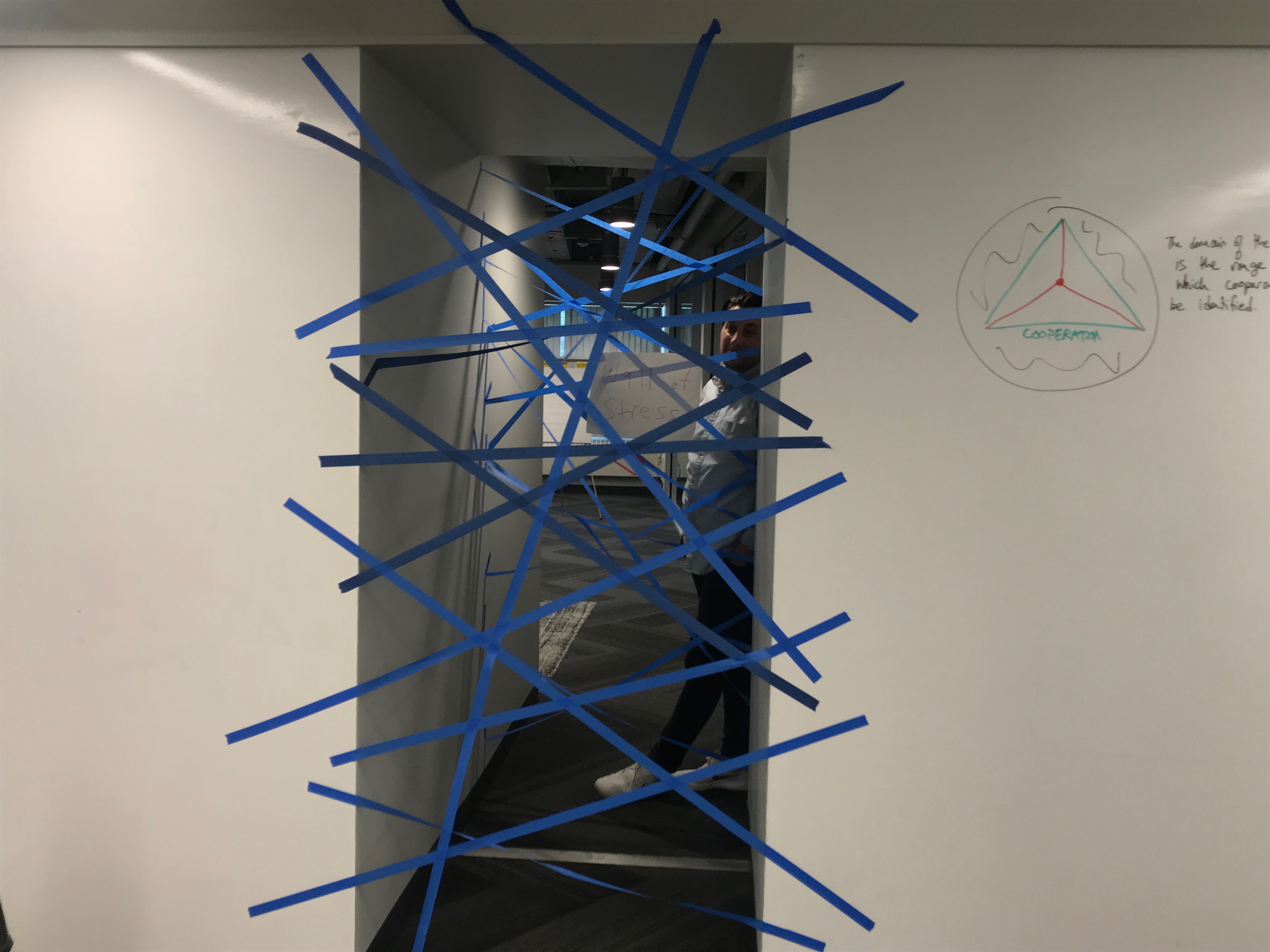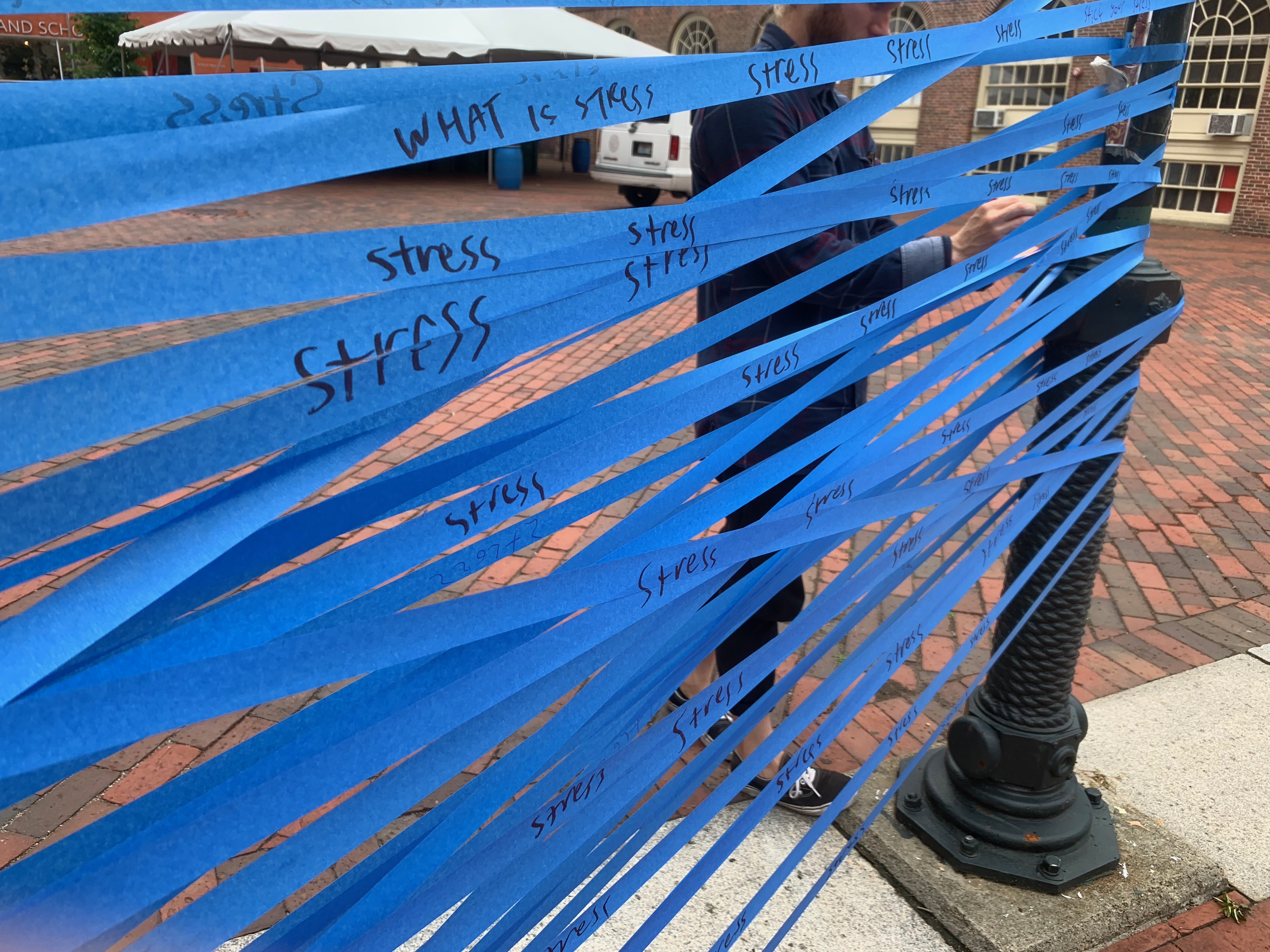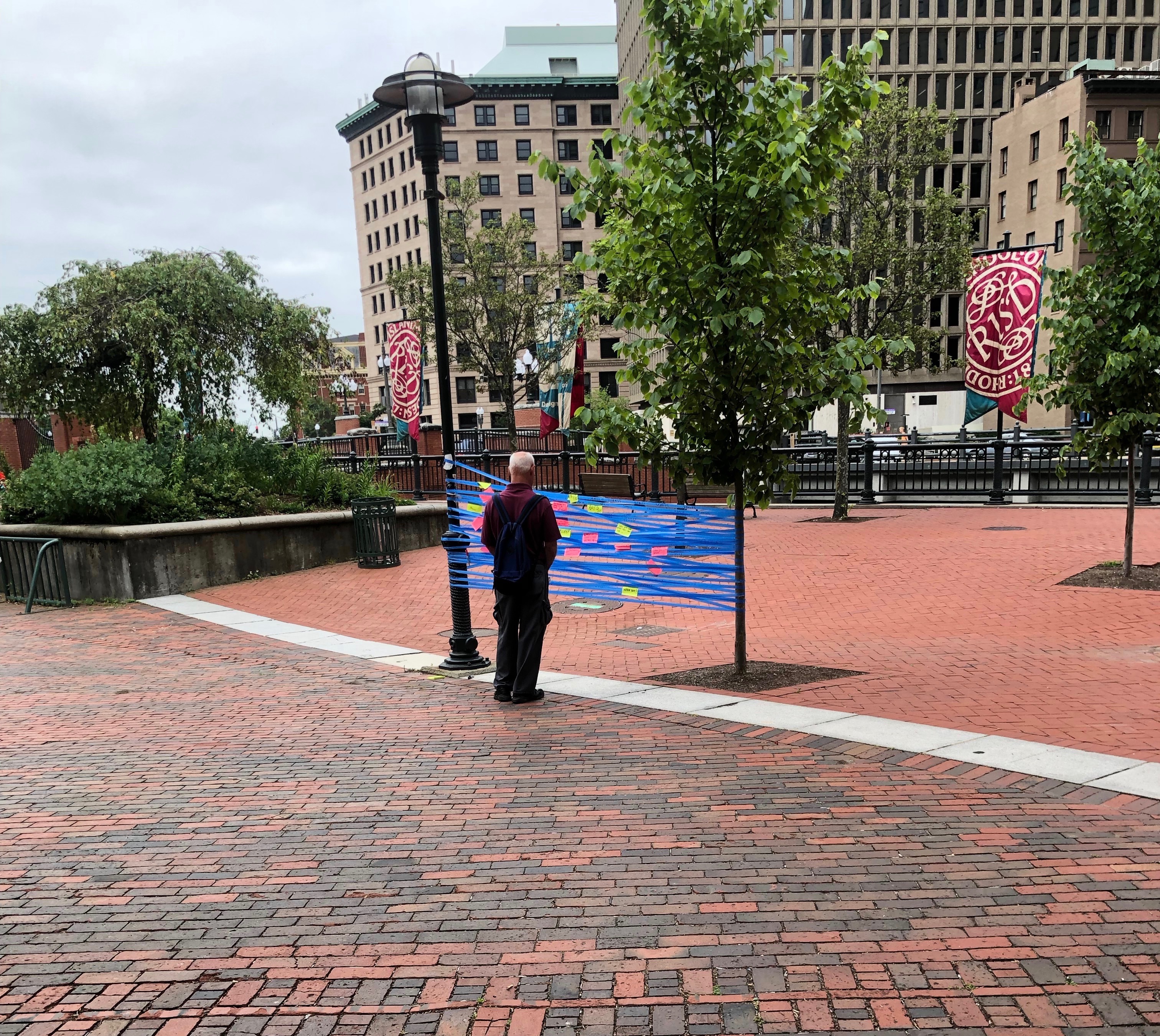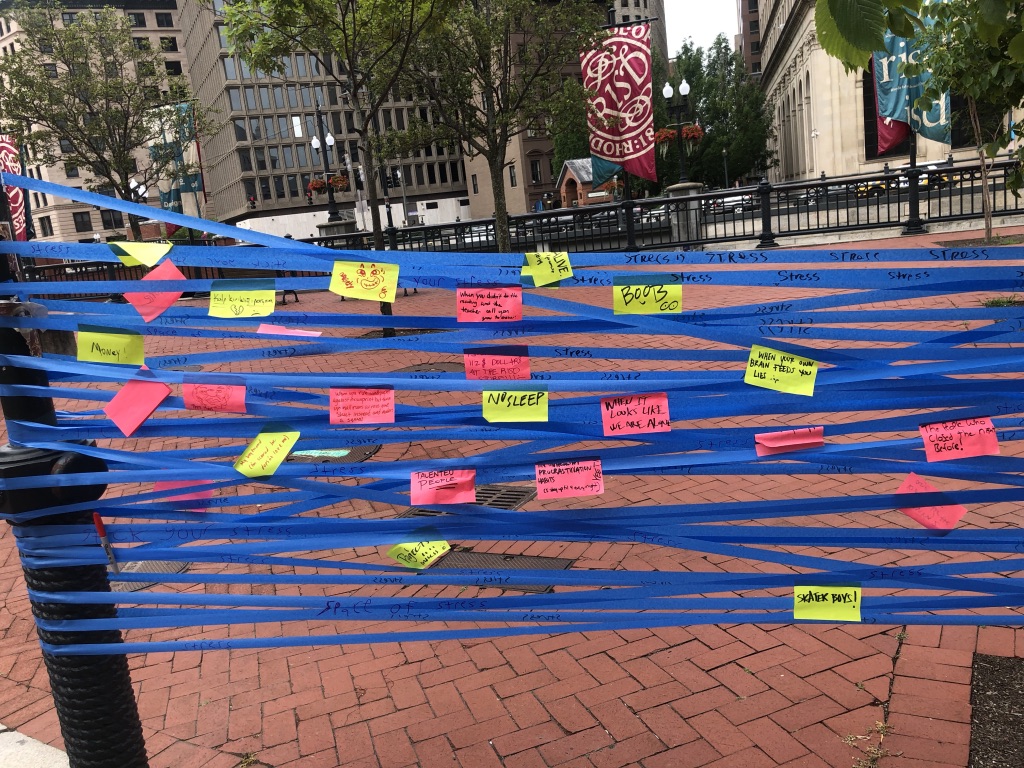
Namhee Kwak and Joseph Houghton

First Stress Wall prototype.

Day 2 at the Stress Wall in Market Square off Main Street in Providence, RI. Passersby would continue to write their stresses onto the wall of blue masking tape. Markers and Post-It notes are placed below the wall to allow anyone to contribute.

After a first prototype in studio, the Stress Wall is set up outside. The tape and handwritten phrases about stress both prompt passersby to reconsider that stress follows us into the public whether we discuss it or not.

Beyond building the wall itself, the rest of the field work involved observation. We encountered mostly students in this test, and adapting this project to different sites, might reveal to us new criteria on how to evaluate project success.
How can we destigmatize mental health care by adding to its singular, private room-driven approach?
Mental health care remains mostly confined to therapy rooms, which implies that mental health should be hidden. How can we change this?
We want to add another dimension to existing mental health practices by engaging the public by involving interaction with others and increase mental health awareness. We would like to expose mental health issues to both patients and non-patients alike, opening up a private space into public spaces, and incorporating mental health conversation into daily life.
Our entry point into the public conversation on mental health conversation was through the topic of stress. Stress is a temporary mental ailment that everyone experiences. It is also especially frequent on college campuses. Our intervention was delivered in the form of a Stress Wall, an outdoor wall of tape onto which the public can write their stressors and current mental ailments. Voluntary participants were prompted with blank post-its on the ground and various phrases written on the Stress Wall, such as, “Stress,” “Stick your Stress,” or “What is Stress?” Then, we waited.
Our Stress Wall served as a public platform to which various forms of psychological ventilation and relief were adhered. The public brought their feelings and thoughts, that are usually reserved for therapy rooms and private conversations, into a public plaza in Providence, RI. Most significantly, group ‘Stress-Walling’ was more prevalent than solitary stress posting, and many participants both read and wrote stresses on the wall. These group-based, mental health-related, exposed interactions brought an element of the mental health conversation out into the public, an element which cannot be found inside of a therapy room.